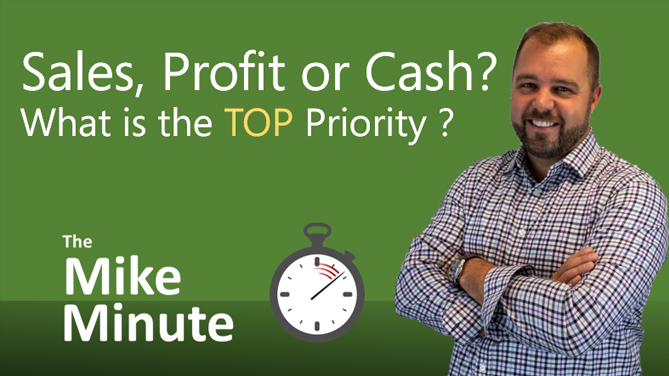In order to make your mark in the business world, you must find your unique value proposition. Often it comes in the form of innovation, as it did for Dell’s founder and CEO, Michael Dell.
He took a start-up personal computer company and went head to head with the biggest names in the industry by adopting a different business model. He went straight to the consumer and cut out the middle man, aka the big box retailer. This meant that he focused on the individual needs of each customer and built a computer that fit their individual needs. This was a unique approach, but also provided him a unique competitive advantage.
His advantage was simple. He didn’t have to carry inventory and he got paid in advance by his customers. He literally had no inventory and used the customers money to buy the parts to build their computer. This seemed like a perfect business model and definitely a unique strength. But with any strength, if you rely too heavily on it, it can become a weakness. In Dell’s case, the weakness exposed itself in the form of limited growth. As the personal computer grew in popularity, Apple and Compaq could easily get their new models in front of more consumers who shopped at stores like Best Buy and others to see, touch and experience the new computer – something that Apple was starting to set the bar around. Dell on the other hand was limited in the exposure they could get for their new products and their growth stagnated.
Michael Dell’s entire business had been built on focusing on the top line revenue growth and the prospect of slower or stalled growth caused him to change directions. He added two new channels to his sales efforts, corporate sales and retailers. It was the retailer channel that gave him the most trouble. Retailers had different expectations because they needed to have inventory on their shelves to sell it. This meant that Dell had to build and maintain an inventory for the retail channel, and wait for the retailer to pay an invoice. This was a major shift away from the old business model (build to order). The result was that sales increased dramatically, but Dell lost money and depleted itself of cash.
Michael Dell recognized this problem and shifted the entire organization’s focus from top line growth to managing the cash conversion cycle. He replaced his old dashboard metrics measuring sales, to new dashboards measuring inventory days, accounts receivable days, and accounts payable days. Cash flow from operations became the driving factor in the company’s new direction. This change in attitude was best summed up in this quote by Michael Dell, “We were always focused on our profit and loss statement. But cash flow was not a regularly discussed topic. It was as if we were driving along, watching only the speedometer, when in fact we were running out of gas.”
CashFlowTool has a variety of metrics to help you understand your cash flow. If you are in a similar situation to Dell’s, then the Speed of Cash™ dashboard will help you see inventory days, AR days and AP days so you fully know you cash conversion cycle at any moment.
Never be surprised by a change in cash flow again. We all should know the difference between profit and cash. More importantly, we should know the drivers that generate cash, grow cash, and keep cash in the business. CashFlowTool is here to help.

